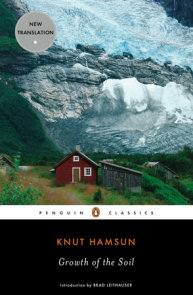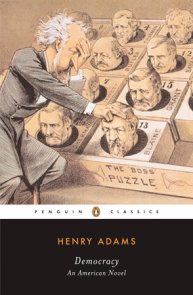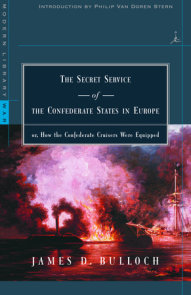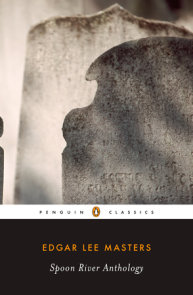READERS GUIDE
Questions and Topics for Discussion
INTRODUCTION
Soon after the end of World War II, a lonely, misunderstood artist in Buenos Aires exhibits a painting that includes a tiny window through which a lone female figure can be observed looking at the sea. The vignette, which seems to the painter to be laden with meaning, escapes the attention of every visitor to the exhibition except one: a beautiful, chestnut–haired woman in her mid–twenties who, the artist imagines, might be the only person in the world capable of understanding both him and his work. As she vanishes into the crowd, the painter suppresses a desire to call out to her and is at once plunged into misery. He is convinced that, in a teeming city of millions, he will never see her again. And yet, miraculously, he later spots her entering an office building and, as she waits for an elevator, blurts out a series of fumbling questions that form the beginning of a relationship that will transform both their lives.
Could this be the premise of a charming, somewhat fluffy love story? Perhaps in the hands of a lesser writer, but not for the brilliant Argentine novelist Ernesto Sábato. The young woman is María Iribarne, whose troubled past we only glimpse but who is convinced that she brings harm to everyone who comes near her. The artist is Juan Pablo Castel, a man whose superficial charm and educated speech conceal a dark contempt for humankind and an existential belief in the emptiness and absurdity of life. Almost from their first meeting, Juan Pablo seems driven by an urge to dominate and possess. María, passive and well–intentioned, observes the demons in Juan Pablo’s nature but seems incapable of tearing herself away from him, even as it becomes clear that they can only exacerbate each other’s pain. Juan Pablo himself is a soul ever more divided, both coldly analytical and given to spasms of volatile irrationality. With supreme lucidity, he meditates upon the ironies and discontents of life; with crazed suspicion, he spirals toward insanity and violent death. As Juan Pablo interacts with friends, acquaintances, and bureaucrats, we see through his eyes the morass of inanity and incomprehension that he finds all around him. He sees in María a glistening, miraculous soul mate, and he reaches out to her in the desperate hope that, she, unlike all others, will love and accept him. But when he reaches toward her one final time, it will be with a very different purpose.
When it first appeared in 1948, The Tunnel was lauded by Albert Camus, who saw in its pages an elaboration of the themes of being and nothingness with which he had wrestled in his own novel The Stranger. Long denied the attention it richly deserves, The Tunnel has again found an eager audience among readers who have discovered in Juan Pablo’s tortured brilliance an ominous emblem for our own fractured and disaffected times.
ABOUT ERNESTO SÁBATOBorn in 1911 in Rojas, a small town in Argentina, Ernesto Sábato initially prepared for a life in the sciences. After earning a Ph.D. in physics at the Universidad Nacional de la Plata, he traveled to Paris, where he studied at the Sorbonne and worked at the famed Curie Institute. Although a promising career lay before him, Sábato found that his work left him feeling empty and “beaten up by disbelief.” Further disillusioned by the calamity of World War II, he turned to the humanities, becoming a full–time writer and painter. In a writing career that spanned seven decades, Sábato published a large body of essays and three novels. The first of these, The Tunnel ( 1948), won praise from Graham Greene, Albert Camus, and Thomas Mann. Sábato’s contributions to literary culture earned him Spain’s Miguel de Cervantes Prize and a membership in the French Legion of Honor. In the 1980s, Sábato directed an aggressive investigation of crimes committed by Argentina’s recently deposed military government. Ernesto Sábato died only weeks short of his one hundredth birthday in 2011.
DISCUSSION QUESTIONSThe meaning of the novel’s title becomes clear only in the last eight pages of the book. Do you regard Juan Pablo’s “tunnel” as an apt metaphor for his condition? Do you think that this kind of tunnel is inhabited only by mentally disturbed people like the narrator, or is it a part of many people’s lives? What, if any, are the tunnels in your own life?How reliable is Juan Pablo as a narrator of the facts of his story? How reliable are his interpretations of the events that he recounts? How does his instability influence the way you read his story?Although delusional in some regards, Juan Pablo seems quite lucid when he discusses existential philosophy. How do you regard his philosophical digressions—as an earnest attempt to get at the meaning of life, as a cynical means of defending his actions, or as something else? Does his mental condition fully discredit him as a philosopher, or does he, disturbingly, make sense?Imagine that you are a public defender who is obliged to argue for clemency on Juan Pablo’s behalf. What arguments would you make? Would you expect them to succeed? Why or why not?The Tunnel begins with what may be the quintessential literary spoiler: “It should be sufficient to say that I am Juan Pablo Castel, the painter who killed María Iribarne” (p. 1) Having dispelled his novel’s potential for suspense with his first eighteen words, how does Sábato go about maintaining interest in his narrative until the end? Does he succeed? How would the novel be different if Sábato had not immediately given away the ending?Sábato chose to break The Tunnel into very brief, staccato chapters, averaging less than four pages in length. How does this organization affect the experience of reading the novel? How would it feel if the novel were written as one uninterrupted narration? Do the frequent breaks reflect some aspect of Juan Pablo’s character? Might an uninterrupted presentation have reflected the narrator’s character more accurately?Juan Pablo notes more than once his contempt for humankind. Given what he tells us of the people he knows apart from María, is he entirely to blame? How do the inane and alienating behaviors of the people around Juan Pablo contribute to his sense of both isolation and superiority? In a better world, would he be a better person?Although Juan Pablo’s treatment of María quickly becomes abusive and his behavior is constantly threatening, she seems to try only halfheartedly to get away from him. What is it about her life or her personality that causes her to be continually drawn back to this man who seems so obviously dangerous? Is there a clue to be found in her statement, “Death isn’t my ’type’ . . . and yet it often attracts me” (p. 71)?Remarking on the sadness he feels in the presence of beauty, Juan Pablo asks himself, “Do all people feel this way, or is it just another sign of my black disposition?” (p. 103) How would you answer Juan Pablo’s question on this point? In a larger sense, do you think Juan Pablo is completely outside the norm, or is he somehow representative of the human condition?The prostitute who thinks Juan Pablo has called her a whore reacts violently, biting him on the arm. María, by contrast, responds much more meekly to his insults, either weeping or looking back at him with pity. Is there something in the mildness of María’s responses that, strangely, provokes Juan Pablo to further cruelty? How might this be explained?Juan Pablo is convinced of one fact about María: “that she was like me” (p. 52). María, too, senses “that we were alike” (p. 103). Are they right about this? What proof do we have, apart from their own assertions, that Juan Pablo and María are kindred souls? Does the evidence convince you, or are the two of them deceived in their perceptions of each other?The Tunnel has been described as an existential novel. Just what is an existential novel? What features should such a novel possess in order to fit the description? Has The Tunnel been correctly classified?The main characters of novels that are regarded as “existential” frequently behave horribly toward people with less power, e.g., Dostoevsky’s underground man’s emotional cruelty to the prostitute Liza, Camus’s M. Meursault’s murder of the nameless Arab, and, here, Juan Pablo’s abuse and murder of María. Why is the existential attitude so often embraced by such unsavory protagonists? Does this trend say anything significantly damning about existentialism as a philosophy?Juan Pablo and María might never have met if he had not painted a picture with a window scene and if she had not been fascinated by that window. What do the painting and its window represent? Why do you think so seemingly trivial a thing is capable of binding the two characters so inescapably?Is Juan Pablo better described as rational or irrational? Why? Or do we need some different vocabulary with which to capture him?The most apparent motive for Juan Pablo’s murder of María is jealousy. But are there other forces at work? What might be some of the other psychological reasons that drive him to commit his crime?Instead of allowing The Tunnel to end abruptly with the death of María, Sábato offers a slight space for catharsis by adding the very brief chapter XXXIX. What do you think of this stylistic choice? Would you have preferred a different epilogue, either a more extensive one or none at all? Why? If this issue intrigues you, you may want to try to write your own last chapter for the novel.






















